Prepare an authentic chimichurri recipe with fresh parsley, oregano, garlic, olive oil, and vinegar. It adds flavor to grilled meats such as this grilled flank steak, seafood, or vegetables. You’ll love how versatile this Argentinian condiment is!
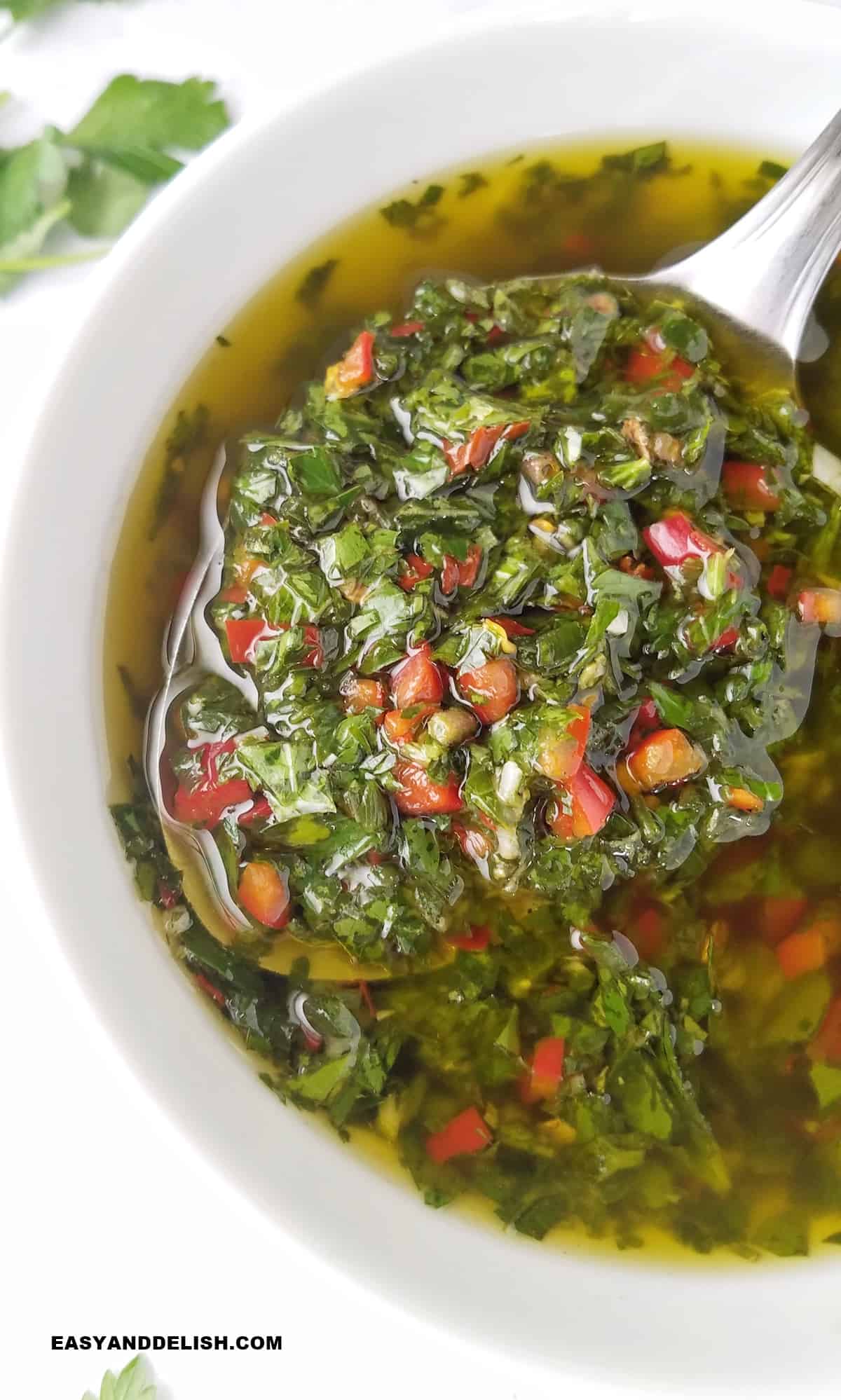
Find out how to make the best chimichurri with simple ingredients. It's a budget-friendly sauce that can boost the flavor of your meals greatly!
Table of Contents
Authentic chimichurri
Chimichurri is a popular condiment originally from Argentina and Uruguay. Typically, it is served as a condiment on grilled meats like grilled picanha steak, pork, and chicken, making delish easy dinners.
It is as easy as this Mexican condiment, Mexican Pickled Red Onions.
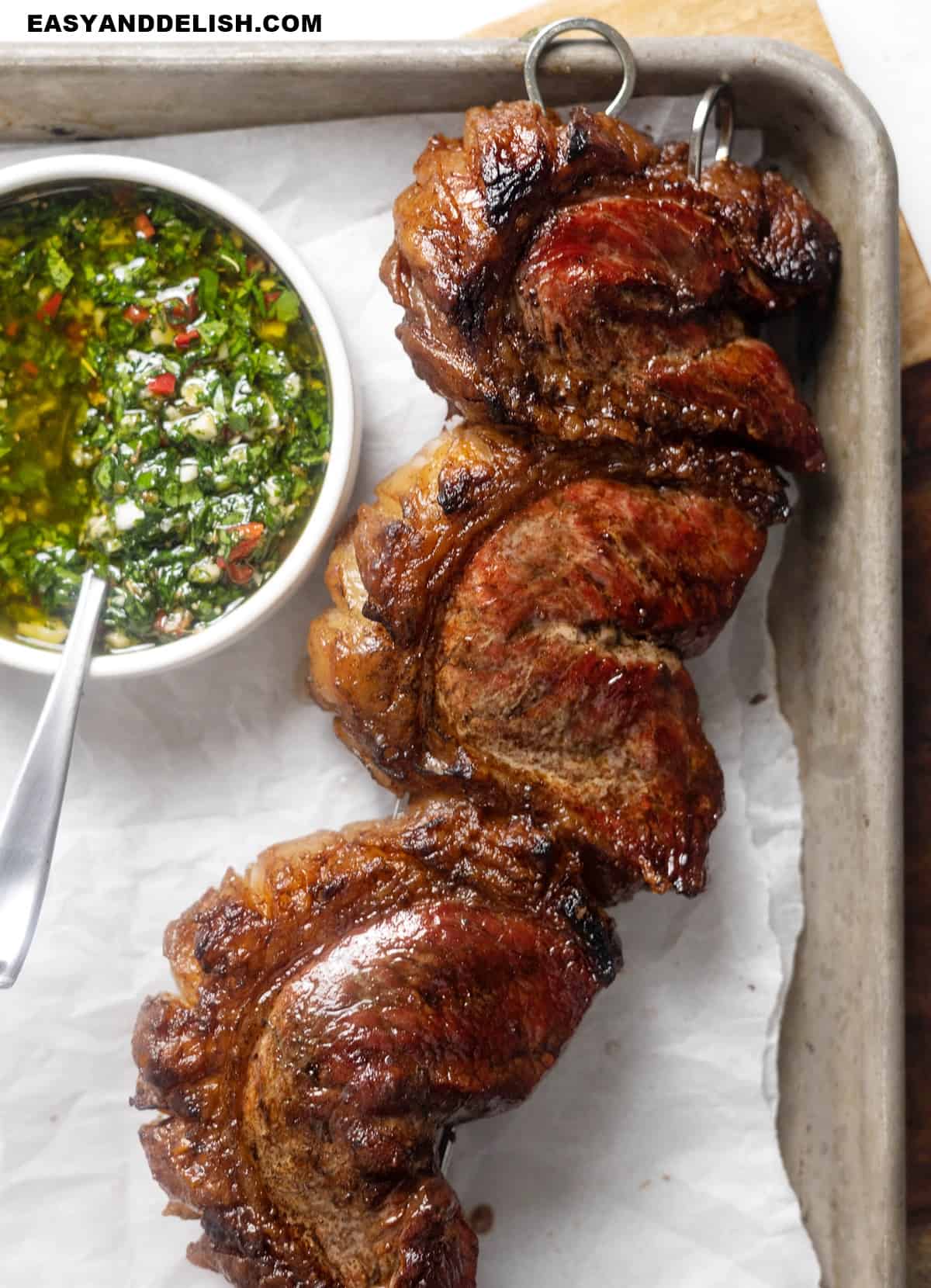
Its vibrant green color comes from fresh herbs, like parsley and oregano, while fresno pepper and pepper flakes impart a slight kick.
Red wine vinegar is the traditional acid used, but I like to add lime juice for a touch of sweetness that goes well with the richness of olive oil.
Hand-chopping the veggies is by far the best way to prepare an authentic chimichurri recipe, as it results in a chunky texture and well-rounded flavor.
This recipe proves that it doesn’t take a lot of money or time to create a versatile sauce.
Using easy-to-find, inexpensive ingredients and only about 10 minutes of preparation, you can create a super tasty condiment at home.
In addition, use it as a marinade, mix it into dips, or drizzle it over your favorite type of grilled meat!
Ingredient and substitutions
To make this Argentinian chimichurri recipe, you'll need the following:
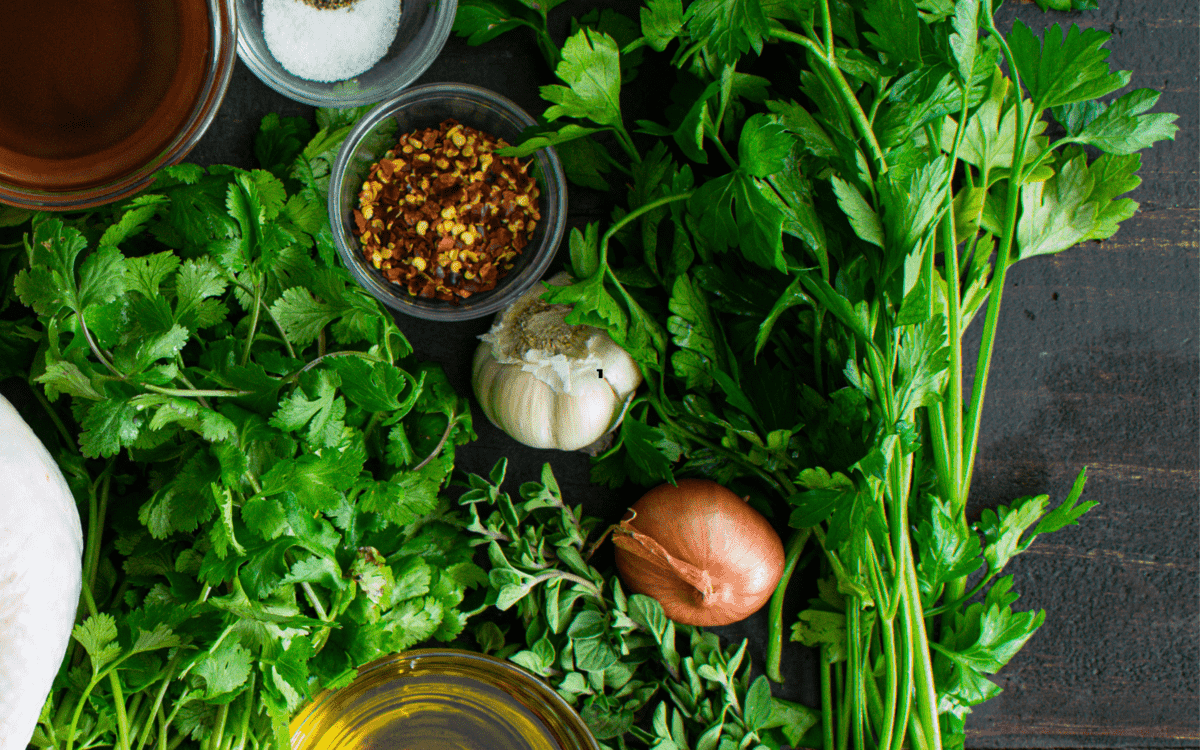
- Parsley - Substitute with cilantro or mint for a different taste.
- Fresh oregano - If you don’t have oregano, use all parsley or cilantro.
- Red pepper (fresno), finely chopped - Or, use red jalapeño or red bell pepper.
- Green onion - You can also use chives or omit the green onion.
- Garlic cloves, minced and turned into a paste - Don’t skip adding fresh garlic cloves.
- Red pepper flakes - Or, use chili flakes for a similar spice level and flavor.
- Red wine vinegar - White wine vinegar or apple cider vinegar are also options.
- Fresh lime juice - Lemon juice will work in a pinch.
- Extra virgin olive oil - If you don’t have olive oil, try avocado oil.
- Salt and pepper to taste
How to make chimichurri sauce
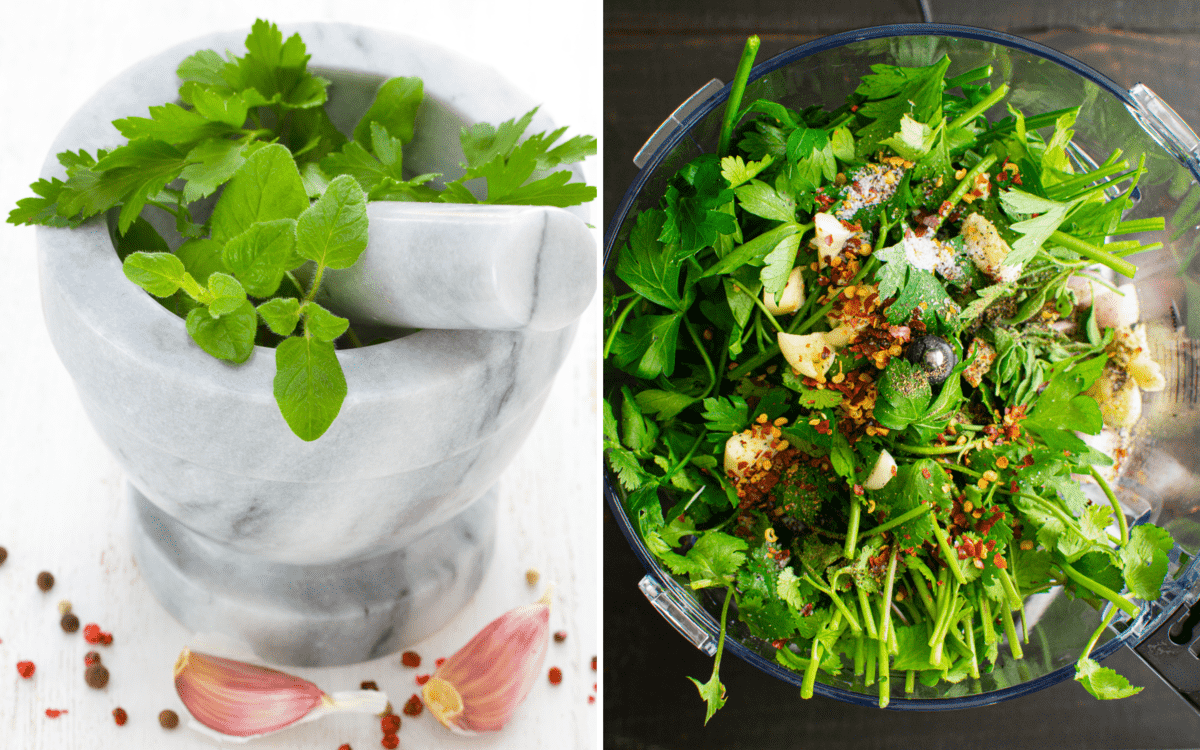
- In a medium bowl, mix all the ingredients together (hand-chopped parsley, oregano, red pepper and green onion, minced garlic, red pepper flakes, red wine vinegar, lime juice, olive oil, and salt and pepper) until combined. It will result in a chimichurri sauce with a chunky texture. Alternatively, you can use either the mortar and pestle or the food processor for a smooth sauce.
- Cover and chill in the fridge to use within 24-48 hours. Right before using, mix it again!
Useful tips for making traditional chimichurri
- Use fresh herbs: To create the best chimichurri recipe, ensure your parsley (or other herbs) are fresh and aromatic.
- Let it rest: Allow the chimichurri time to chill in the fridge so the flavors fully develop and meld together.
- Chop the ingredients: You can use a food processor or a pestle and mortar for a smoother chimichurri, but I prefer hand-chopping the herbs and veggies for the ideal flavor and texture.
- Serve it properly: For the most intense and vibrant taste, serve your chimichurri at room temperature.
What to serve with chimichurri
There are so many ways you can incorporate this authentic chimichurri recipe into your daily cooking! From flatbreads to grilled meats, these are some of my favorite recipes to use it in:
- How to cook skirt steak on the stove
- Burrata toast
- Smoked beef tenderloin
- Picanha roast
- Grilled chicken legs
- Blackstone pork chops
- Air fryer lamb chops
- Steak flatbread
- Palm heart bacon bites
- Smoked salmon bites
- Mushroom steak, cauliflower steak, or cabbage steaks
- Air fryer steak
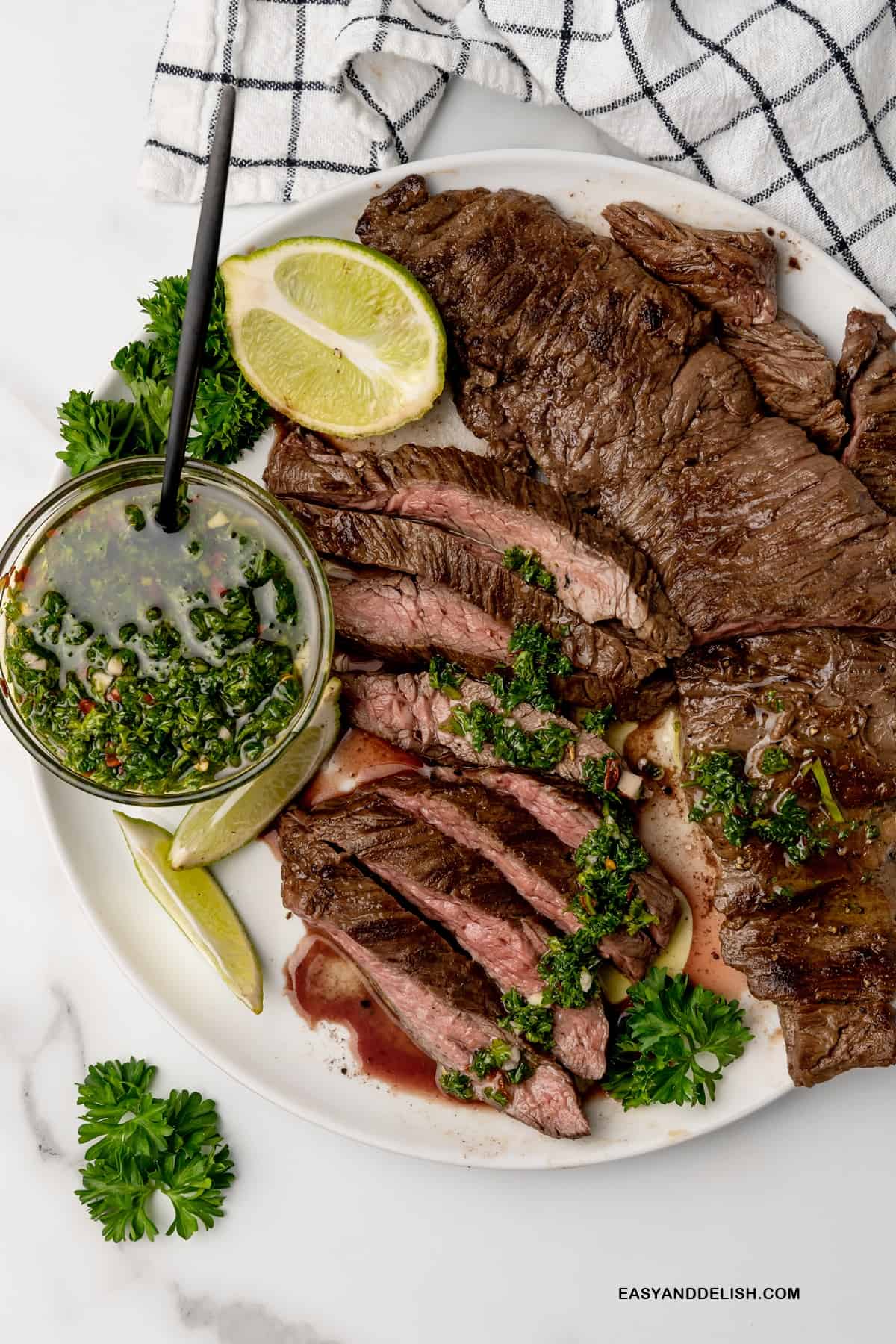
FAQ’s
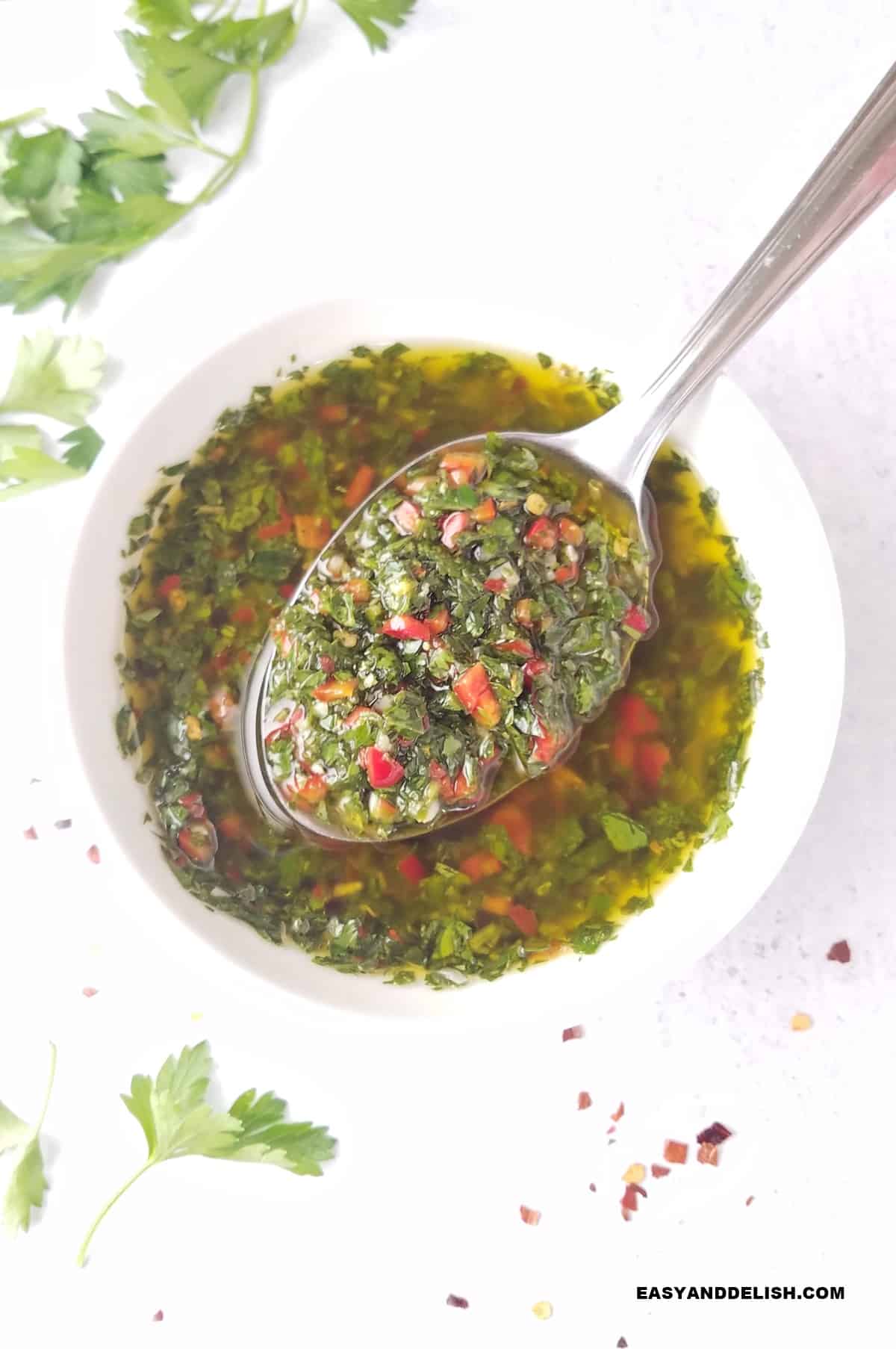
Chimichurri is a vibrant and flavorful Argentinian and Uruguayan sauce made with fresh herbs (often parsley), garlic, an acid (usually red wine vinegar), and olive oil. Nowadays, there are many variations, some spicier than others. You’ll most often find it served on meat like beef, pork, or chicken.
Traditional chimichurri comes from Argentina and Uruguay, where it is typically paired with barbecued or grilled meats. However, it is also found in Southern Brazilian cuisine and often served in Brazilian steakhouses.
Yes, you can freeze chimichurri sauce for up to 2 months. Just make sure to keep it in an airtight container or a freezer-safe bag.
Gremolata is an Italian condiment made with lemon, garlic, and parsley. Although it shares some similarities with chimichurri, it lacks the spicy, tangy appeal that an authentic chimichurri recipe offers.
Yes, Argentinian chimichurri sauce is vegan-friendly and does not contain any animal-derived ingredients.
Yes! Chimichurri can be mixed with pasta in place of pesto or other sauces, giving a unique twist to traditional pasta recipes.
There are many countries that prepare their own version of Uruguayan or Argentinian chimichurri, all of which have slight variations in ingredients and preparation techniques. Some of these countries include Brazil, Mexico, and the Dominican Republic. The most significant difference between Mexican and Argentinian chimichurri is the use of cilantro instead of oregano. However, this isn’t a rule, and there are many subtle differences, even within each country or region.
Yes, you can use any fresh herb you like to make chimichurri. However, the most common and authentic choice is parsley. If you opt for mint or cilantro, just know the flavor will vary, but it will still taste quite delicious!
Yes, there are a few ways to make chimichurri sauce depending on what you have available and how you want the sauce to turn out (chunky or smooth). The most traditional way is to hand-chop everything or by grinding everything with a pestle and mortar. You can also use a blender or food processor for a smoother sauce which is the fastest way to make chimichurri.
Yes, there are many types of chimichurri nowadays. Some of the variations include creamy chimichurri, red chimichurri, dry seasoning chimichurri, or chimichurri marinade for steak, using the sauce as a base.
Apart from drizzling chimichurri sauce on grilled meat, there are a wide variety of uses for this condiment. I use it as a base layer on pizza, mix it to make an aioli, spread it on flatbread, or layer it onto sandwiches.
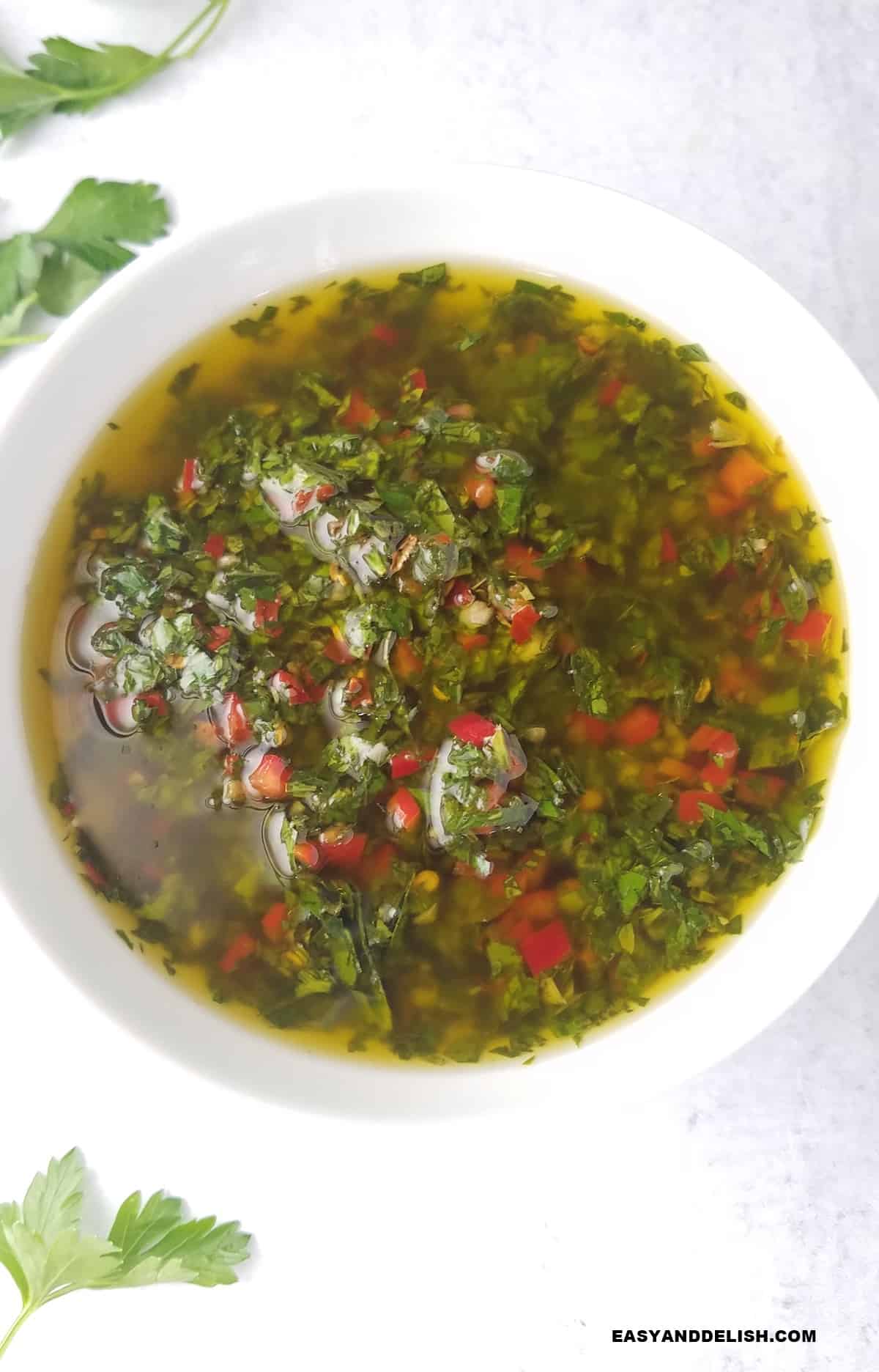
Chimichurri Recipe variations
- Herbs: Replace parsley with cilantro or mint for a unique twist.
- Creamy: Add sour cream or Greek yogurt for a creamy chimichurri consistency.
- Dry chimichurri: Omit the liquids and use the dry ingredients as a rub.
- Chimichurri-infused butter: Mix chimichurri with softened butter for a yummy compound butter to spread on bread or melt over grilled meats.
Other sauce recipes to enjoy
PIN & ENJOY!

Authentic Chimichurri Recipe
Equipment
- 1 medium bowl
- 1 Chef's knife
- 1 cutting board
Ingredients
- 1 cup chopped parsley Substitute with cilantro or mint for a different taste.
- 3 tablespoon chopped fresh oregano If you don’t have oregano, use all parsley or cilantro.
- 1 red pepper fresno, finely chopped, Alternatively, use red jalapeño or red bell pepper.
- ½ cup finely chopped green onion You can also use chives or omit the green onion.
- 4 garlic cloves minced and turned into a paste, Don’t skip adding fresh garlic cloves.
- 2 teaspoon red pepper flakes Or, use chili flakes for a similar spice level and flavor.
- 2 tablespoon red wine vinegar White wine vinegar or apple cider vinegar are also options.
- 1 tablespoon fresh lime juice Lemon juice will work in a pinch.
- ½ cup extra virgin olive oil If you don’t have olive oil, try avocado oil.
- Salt and pepper to taste
Instructions
- In a medium bowl, mix all the ingredients together (hand-chopped parsley, oregano, red pepper and green onion, minced garlic, red pepper flakes, red wine vinegar, lime juice, olive oil, and salt and pepper) until combined. It will result in a chimichurri sauce with a chunky texture. Alternatively, you can use either the mortar and pestle or the food processor for a smooth sauce.
- Cover and chill in the fridge to use within 24-48 hours. Right before using, mix it again!
Recipe Video

Recipe Notes
- Fridge: Store chimichurri in an airtight container in the refrigerator for up to 1-2 days. It’s essential to keep it covered and check on it regularly for signs of spoilage.
- Freezer: If you won’t use your chimichurri sauce within a few weeks, it’s best to store it in the freezer. Keep it in an airtight container or resealable plastic bag for up to 2 months. Thaw frozen chimichurri in the fridge overnight, mix well, and serve at room temperature.
- Prep ahead: Chimichurri can be prepared up to 2 days in advance and kept in the fridge, allowing the flavors to meld and intensify.
Nutrition
** Nutrition labels on easyanddelish.com are for educational purposes only. This info is provided as a courtesy and is only an estimate, since the nutrition content of recipes can vary based on ingredient brand or source, portion sizes, recipe changes/variations, and other factors. We suggest making your own calculations using your preferred calculator, based on which ingredients you use, or consulting with a registered dietitian to determine nutritional values more precisely.
Please note that health-focused and diet information provided on easyanddelish.com is for educational purposes and does not constitute medical advice, nor is it intended to diagnose, treat, cure, or prevent disease. Consult with your doctor or other qualified health professional prior to initiating any significant change in your diet or exercise regimen, or for any other issue necessitating medical advice.



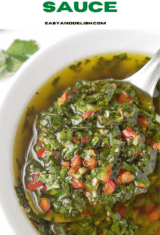
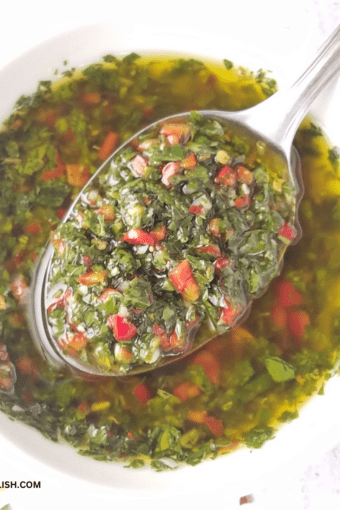
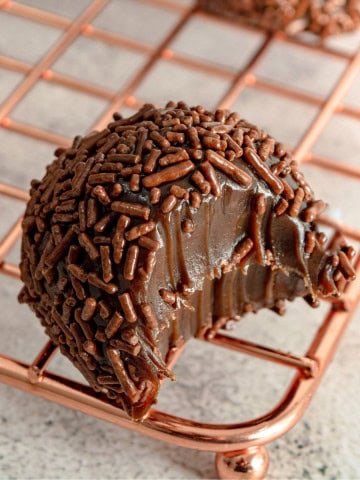

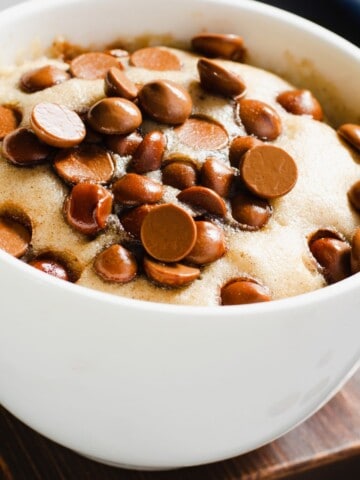

Leave a Reply